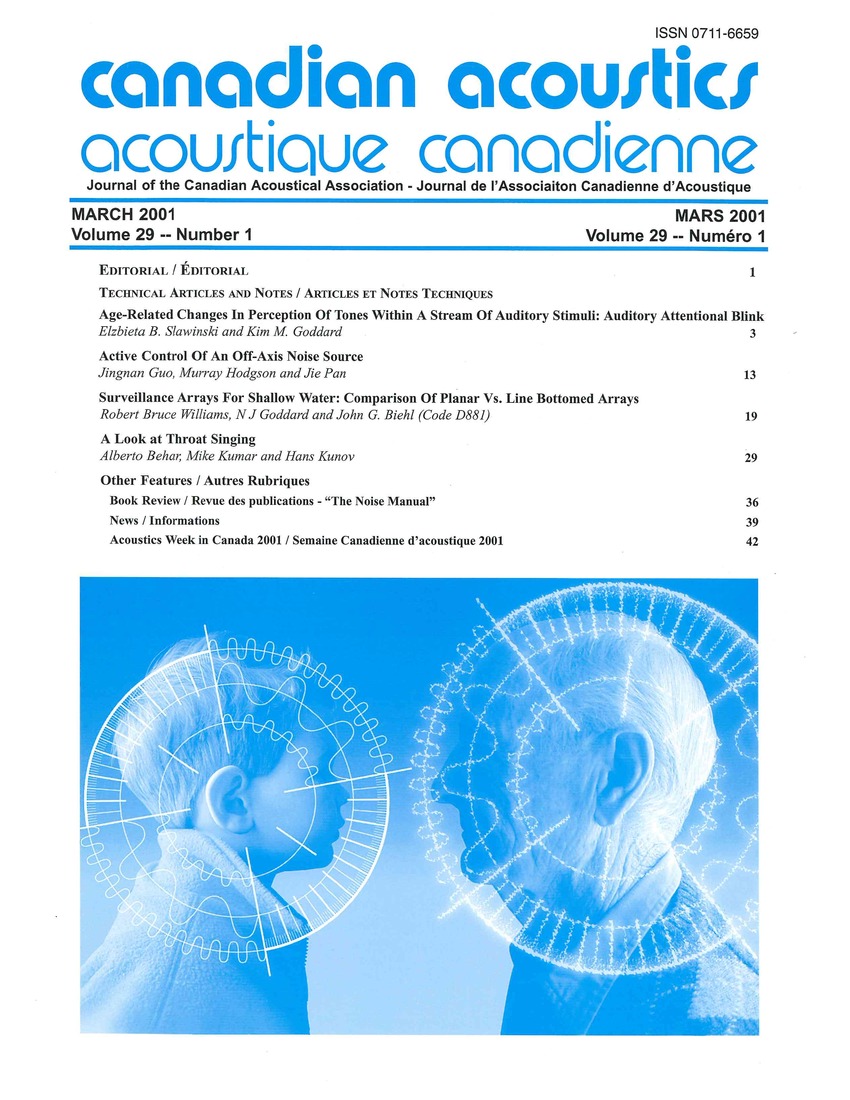Surveillance arrays for shallow water: Comparison of planar vs. line bottomed arrays
Mots-clés :
Acoustic noise measurement, Attenuation, Bandwidth, Detectors, Seawater, Signal processing, BeampatternsRésumé
Ilya plusieurs différentes architectures de réseau, des réseaux linéaires horizontaux, verticaux ainsi que des réseaux plans, qui sont présentement en voie de développement pour des applications en eaux peu profondes. Un objectif de ce travail est d’évaluer la performance des réseaux ayant des architectures différents. Pour accomplir ceci des réseaux on été mis à l’épreuve durant un essai en mer (RDS-2) qui a eu lieu dans la mer de Timor en novembre 1998. Ce traité compare la performance de détection à large bande de deux types de réseaux, un réseau plan (Octupus) et un réseau horizontal linéaire (ULRICA) au site RDS-2. Les statistiques de bruits et les niveaux de seuil des signaux présentés ici on été obtenus de données de bruit ambiant. Des différences significatives de la dépendance du seuil sur l’azimuth sont démontrées entre le réseau Octopus et ULRICA. Ces différences sont attribuées aux géométries distinctes et par conséquent la mise en forme de faisceau des réseaux. Les données du signal, obtenu d’une source acoustique submergée, sont utilisées en conjonction avec les données de brait pour déterminer la performance de détection pour une gamme de niveau d’émission. Les résultats obtenues au site RDS-2 inidquent que la performance de détection des réseaux à 16 éléments ULRICA et Octopus sont comparables.Fichiers supplémentaires
Publié-e
Comment citer
Numéro
Rubrique
Licence
Author Licensing Addendum
This Licensing Addendum ("Addendum") is entered into between the undersigned Author(s) and Canadian Acoustics journal published by the Canadian Acoustical Association (hereinafter referred to as the "Publisher"). The Author(s) and the Publisher agree as follows:
-
Retained Rights: The Author(s) retain(s) the following rights:
- The right to reproduce, distribute, and publicly display the Work on the Author's personal website or the website of the Author's institution.
- The right to use the Work in the Author's teaching activities and presentations.
- The right to include the Work in a compilation for the Author's personal use, not for sale.
-
Grant of License: The Author(s) grant(s) to the Publisher a worldwide exclusive license to publish, reproduce, distribute, and display the Work in Canadian Acoustics and any other formats and media deemed appropriate by the Publisher.
-
Attribution: The Publisher agrees to include proper attribution to the Author(s) in all publications and reproductions of the Work.
-
No Conflict: This Addendum is intended to be in harmony with, and not in conflict with, the terms and conditions of the original agreement entered into between the Author(s) and the Publisher.
-
Copyright Clause: Copyright on articles is held by the Author(s). The corresponding Author has the right to grant on behalf of all Authors and does grant on behalf of all Authors, a worldwide exclusive license to the Publisher and its licensees in perpetuity, in all forms, formats, and media (whether known now or created in the future), including but not limited to the rights to publish, reproduce, distribute, display, store, translate, create adaptations, reprints, include within collections, and create summaries, extracts, and/or abstracts of the Contribution.


